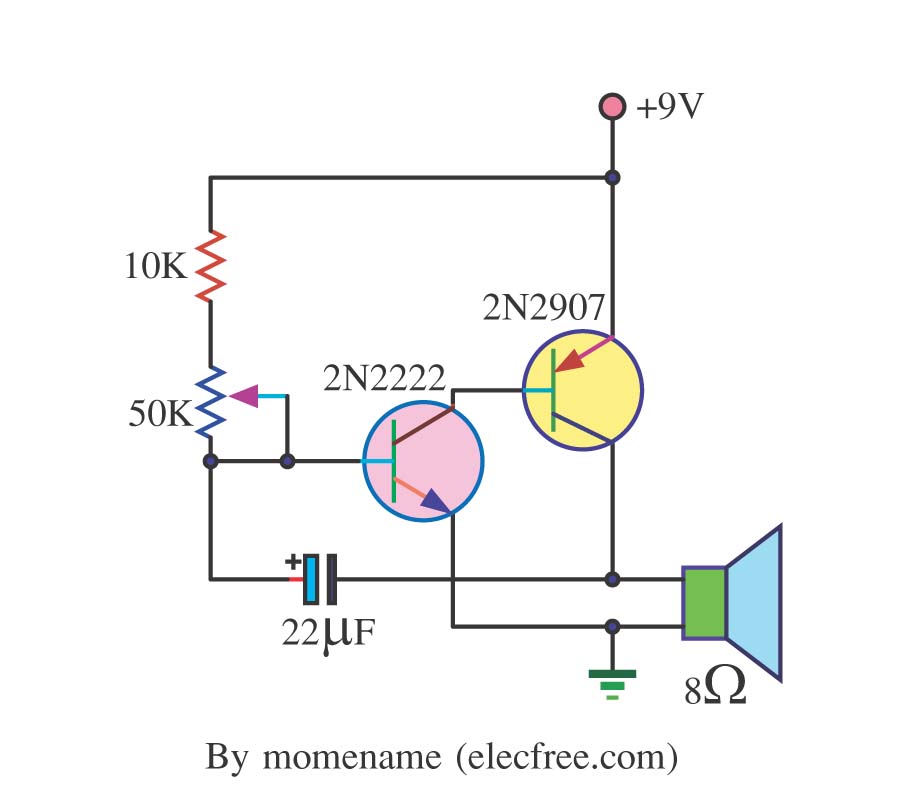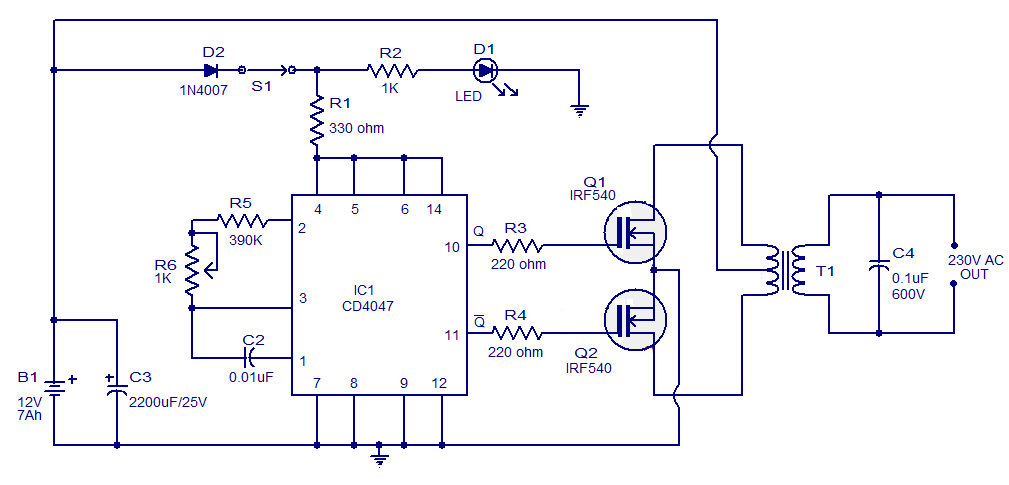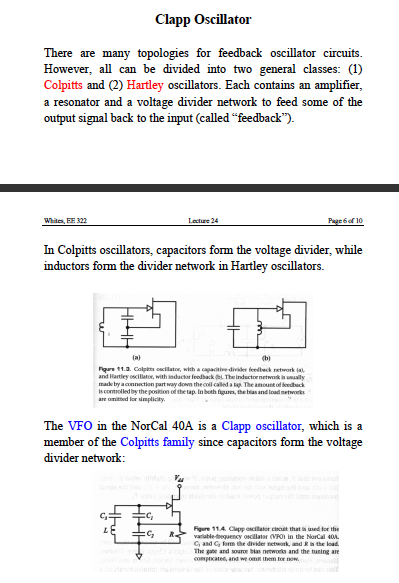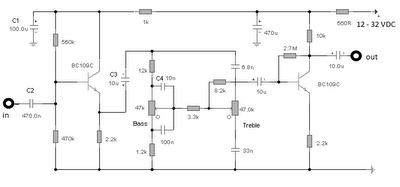
Simple Tone Oscillator Generator by 2N2222

This is a simple tone oscillator generator. It uses the transistors 2N2222 and 2N2907 as the main components. The tone sound is controlled with a 50K ohm resistor (R2) and an 8-ohm speaker is utilized.
The tone oscillator generator circuit is designed to produce audio signals by employing a pair of transistors, specifically the 2N2222 and 2N2907. The 2N2222 is an NPN transistor often used for switching and amplification, while the 2N2907 is a complementary PNP transistor. Together, these transistors form a basic astable multivibrator configuration, which generates square wave signals.
In this circuit, the frequency of the oscillation can be adjusted using the resistor R2, which is set at 50K ohms. This resistor plays a critical role in determining the charging and discharging time of the timing capacitor, which ultimately influences the frequency of the output tone. A larger resistance value will result in a lower frequency, while a smaller resistance will increase the frequency.
The output of the oscillator is connected to an 8-ohm speaker, which converts the electrical signals into audible sound. The choice of an 8-ohm speaker is common in audio applications, as it provides a good balance between sound quality and power handling capability.
To construct this circuit, the following components are typically required:
- Two transistors: 2N2222 (NPN) and 2N2907 (PNP)
- A resistor (R2) of 50K ohms
- A timing capacitor (the value of which should be selected based on the desired frequency range)
- An 8-ohm speaker
- Additional passive components such as coupling capacitors and biasing resistors to stabilize the circuit.
The circuit should be powered by a suitable DC voltage source, typically in the range of 5V to 12V, depending on the specifications of the transistors used. Proper heat dissipation measures should be considered, especially if the circuit is to be operated continuously for extended periods.
In summary, this simple tone oscillator generator circuit is an effective way to produce variable frequency audio tones, making it suitable for various applications such as alarms, sound effects, or educational projects in electronics.This is Simple Tone Oscillator Generator. It is use transistor 2N2222 and 2N2907 be main part. By control tone sound with R2 - 50K and use 8ohm size. Detail. 🔗 External reference
The tone oscillator generator circuit is designed to produce audio signals by employing a pair of transistors, specifically the 2N2222 and 2N2907. The 2N2222 is an NPN transistor often used for switching and amplification, while the 2N2907 is a complementary PNP transistor. Together, these transistors form a basic astable multivibrator configuration, which generates square wave signals.
In this circuit, the frequency of the oscillation can be adjusted using the resistor R2, which is set at 50K ohms. This resistor plays a critical role in determining the charging and discharging time of the timing capacitor, which ultimately influences the frequency of the output tone. A larger resistance value will result in a lower frequency, while a smaller resistance will increase the frequency.
The output of the oscillator is connected to an 8-ohm speaker, which converts the electrical signals into audible sound. The choice of an 8-ohm speaker is common in audio applications, as it provides a good balance between sound quality and power handling capability.
To construct this circuit, the following components are typically required:
- Two transistors: 2N2222 (NPN) and 2N2907 (PNP)
- A resistor (R2) of 50K ohms
- A timing capacitor (the value of which should be selected based on the desired frequency range)
- An 8-ohm speaker
- Additional passive components such as coupling capacitors and biasing resistors to stabilize the circuit.
The circuit should be powered by a suitable DC voltage source, typically in the range of 5V to 12V, depending on the specifications of the transistors used. Proper heat dissipation measures should be considered, especially if the circuit is to be operated continuously for extended periods.
In summary, this simple tone oscillator generator circuit is an effective way to produce variable frequency audio tones, making it suitable for various applications such as alarms, sound effects, or educational projects in electronics.This is Simple Tone Oscillator Generator. It is use transistor 2N2222 and 2N2907 be main part. By control tone sound with R2 - 50K and use 8ohm size. Detail. 🔗 External reference





